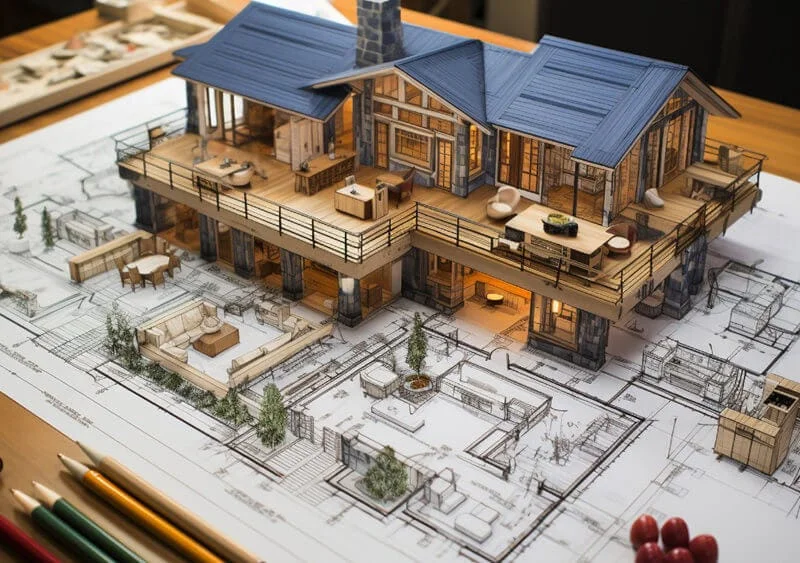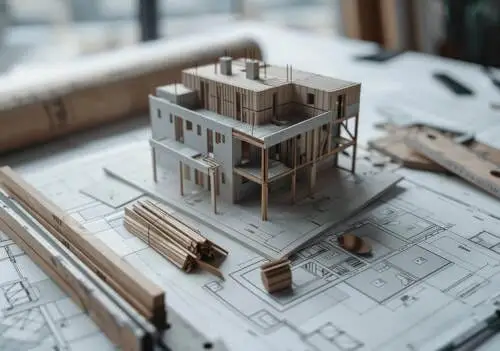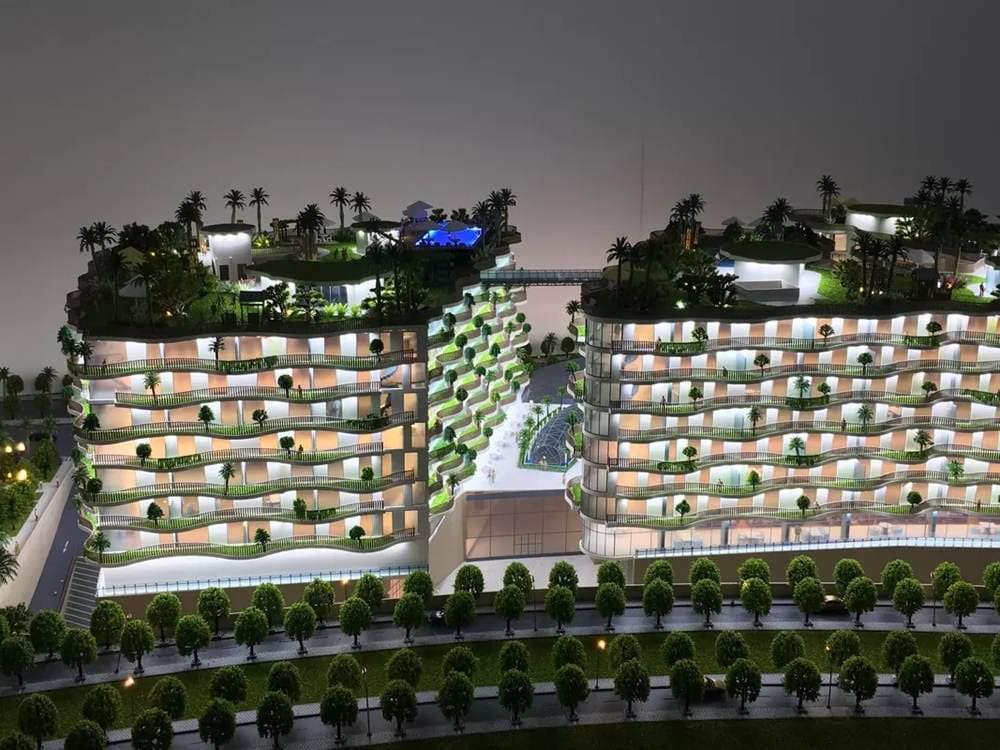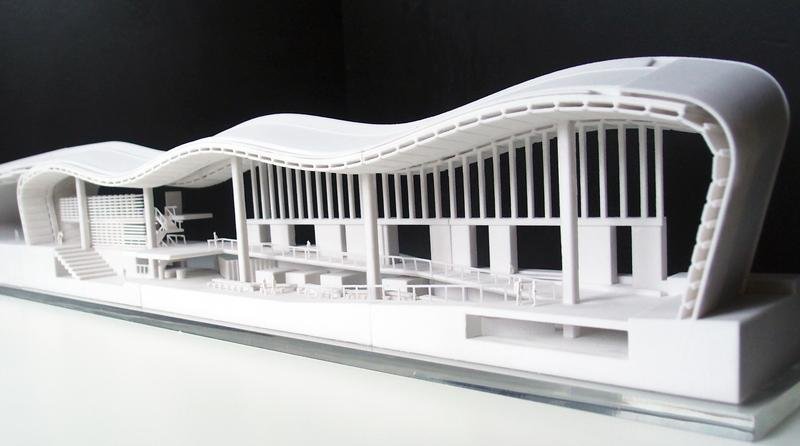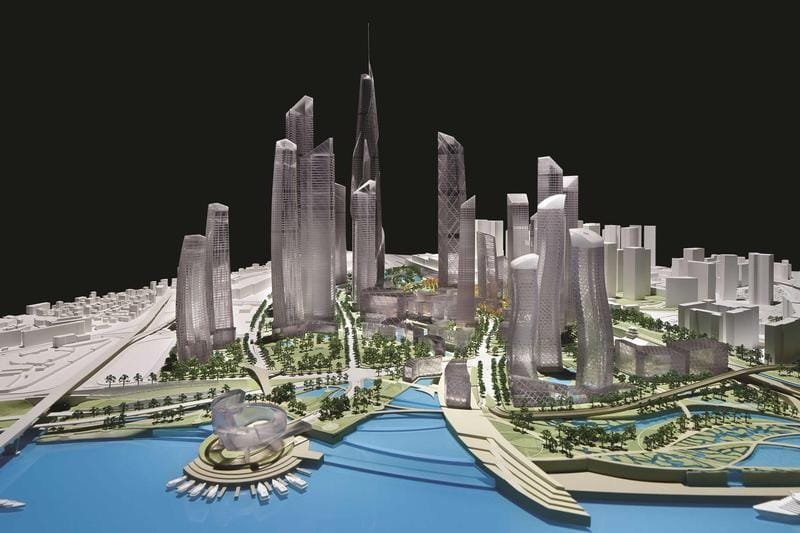En el mundo arquitectónico actual, donde las pantallas de computadora están llenas de detalladas 3D Renderizaciones, Podrías pensar que hecha a mano modelos a escala son cosa del pasado. Asombrosamente, Estos edificios en miniatura todavía están muy vivos en muchos arquitectos.’ estudios. Por qué? Porque incluso con toda la tecnología elegante, Los modelos físicos ofrecen algo especial que las computadoras simplemente no pueden igualar. Ayudan a los arquitectos a pensar, diseño, y comunicar sus ideas de una manera única.
Durante siglos, Los arquitectos han utilizado modelos para dar vida a sus diseños. Piense en los modelos detallados creados durante el Renacimiento! Hoy, estas versiones escaladas de edificios, paisajes urbanos, o incluso los espacios interiores continúan siendo una parte crítica del proceso de diseño. No son solo objetos bonitos; Son herramientas poderosas que ayudan a los arquitectos a refinar sus diseños., explicarlos a los clientes, e incluso la financiación segura para proyectos. Exploremos por qué estas maravillas en miniatura siguen siendo tan importantes en el campo de la arquitectura.
Tabla de contenido

La importancia fundamental de los modelos de escala para los arquitectos
¿Por qué los arquitectos usan modelos de escala??
Pinchar la brecha entre el concepto y la realidad
Imagínese tratar de entender un diseño complejo de construcción solo de Blueprints. Está duro! Los modelos de escala dan vida a esos dibujos planos. Los arquitectos usan modelos como una forma de entrar en sus diseños, Pasando de ideas abstractas a un objeto tangible que pueden contener, examinar, y modificar. Como Beth Mills, Director de Modelshop en Squire & Fogonadura, lo pone:“Nos llamamos el modelshop, Pero somos más un espacio para fabricantes, un taller totalmente funcional, Mientras hacemos modelos arquitectónicos y de escala, Podemos hacer cualquier cosa, desde prototipos de manijas de las puertas e instalaciones de ventanas hasta muebles a medida para el escudero & Equipo de interiores de socios.”Esta cita muestra cómo los modelos ayudan a cerrar la brecha entre las ideas conceptuales y la realidad física de la construcción..
Visualización mejorada y comprensión espacial
Los modelos no solo muestran cómo se verá un edificio; Ayudan a los arquitectos * sentir * el espacio. Sosteniendo y girando un modelo, Los arquitectos tienen una sensación real del tamaño de un edificio, dimensiones, y cómo diferentes partes se relacionan entre sí. Pueden ver cómo la luz solar puede entrar en una habitación o cómo una escalera conecta diferentes niveles.- Comprensión intuitiva de la escala: Un modelo transmite instantáneamente el tamaño y la escala de un proyecto de una manera que los dibujos no pueden. Inmediatamente entiendes lo grande que es una habitación o qué tan alto será un edificio.
- Experimentar espacio en tres dimensiones: A diferencia de una pantalla plana, Un modelo te permite caminar por el diseño, verlo desde diferentes ángulos y perspectivas. Esto ayuda a los arquitectos a comprender cómo las personas se moverán y experimentarán el espacio..
- Visualizar la luz y la sombra: Los arquitectos pueden colocar un modelo debajo de una lámpara o llevarlo afuera para ver cómo la luz natural interactuará con el edificio en diferentes momentos del día.. Esto les ayuda a tomar decisiones sobre la colocación de ventanas y los dispositivos de sombreado..
Facilitar el desarrollo y el refinamiento del diseño
Los modelos no son solo para el espectáculo; Son herramientas de trabajo. Los arquitectos los usan para probar diferentes ideas de diseño, Prueba rápidamente de variaciones y viendo los resultados en tres dimensiones. Este enfoque práctico a menudo conduce a descubrimientos y mejoras inesperadas..- Experimentación e iteración: Es fácil hacer cambios en un modelo físico. Los arquitectos pueden cambiar piezas, Agregar nuevos elementos, o ajustar las proporciones, Explorando rápidamente diferentes opciones de diseño.
- Identificar fallas de diseño: Construir un modelo a menudo revela problemas que no eran obvios en papel o pantalla. Un arquitecto podría descubrir que un corredor es demasiado estrecho o que una línea de techo no funciona del todo. Estos descubrimientos se pueden hacer temprano en el proceso de diseño., ahorrar tiempo y dinero más tarde.
- Resolución de problemas: El acto de construir un modelo obliga a los arquitectos a pensar en el proceso de construcción. Tienen que descubrir cómo las diferentes piezas encajan, que puede conducir a diseños más prácticos y edificables.
Una herramienta poderosa para la comunicación y la colaboración.
Explicar un diseño complejo para alguien que no es arquitecto puede ser un desafío. Los modelos de escala lo hacen mucho más fácil. Proporcionan un lenguaje visual común que todos puedan entender, de clientes a trabajadores de la construcción.- Presentaciones para clientes: Un modelo bien elaborado puede ser increíblemente persuasivo. Los clientes pueden ver y tocar el diseño, haciendo que se sienta más real y emocionante. Como dijo el cliente de un arquitecto, “Hay algo en sostener un modelo en tu mano.. No tienes que explicar nada. Solo lo consigas.”
- Colaboración en equipo: Los modelos ayudan a los arquitectos, ingenieros, y otros consultores trabajan juntos de manera más efectiva. Proporcionan un punto de referencia compartido para las discusiones, Asegurarse de que todos estén en la misma página.
- Participación pública: Para grandes proyectos, Los modelos se pueden utilizar para mostrar al público lo que se está planeando. Esto ayuda a las personas a comprender el impacto del proyecto en su comunidad y puede generar apoyo..
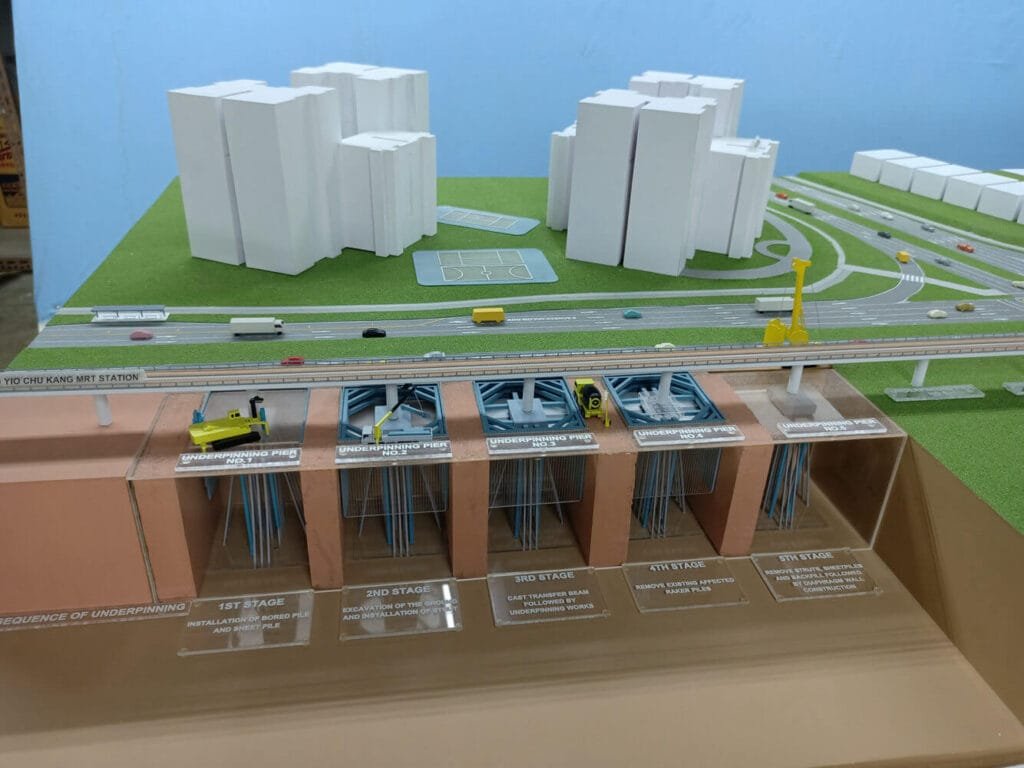
Tipos de modelos de escala y sus aplicaciones
¿Cuáles son los principales tipos de modelos de escala utilizados en la arquitectura??
Modelos conceptuales o de masa
Estos son los primeros modelos que podría construir un arquitecto. Son como los bocetos del mundo del modelaje. Hecho rápidamente a partir de materiales simples como cartón o espuma, exploran la forma básica, tamaño, y disposición de un edificio.- Objetivo: Para probar rápidamente diferentes ideas y ver cómo se ven en tres dimensiones..
- Características: Simple, abstracto, y a menudo carece de detalle.
- Materiales: Cartulina, espuma, madera de balsa.
Modelos de trabajo o de estudio
A medida que se desarrolla el diseño, Los arquitectos crean modelos más detallados para estudiar aspectos específicos del proyecto. Estos modelos les ayudan a refinar el diseño, averiguar detalles estructurales, y resolver problemas.- Objetivo: Para analizar y refinar el diseño, Técnicas de construcción de pruebas, y resolver desafíos de diseño.
- Características: Más detallado que en masa modelos, puede incluir elementos estructurales y algunas características interiores.
- Materiales: Tabla de espuma, madera, plástico, 3D Piezas impresas.
Modelos de presentación
Estos son los showstoppers. Construido para impresionar a los clientes, inversores, o el público, Estos modelos son altamente detallados y realistas.. A menudo incluyen paisajismo, gente pequeña, e incluso luces de trabajo.- Objetivo: Para mostrar el diseño final de una manera convincente y persuasiva.
- Características: Muy detallado, realista, a menudo incluye paisajismo, iluminación, y figuras en miniatura.
- Materiales: Materiales de alta calidad como la madera, acrílico, metal, y componentes impresos en 3D.
Modelos detallados
A veces, Los arquitectos deben centrarse en una parte particular de un edificio, Como una fachada compleja o un intrincado espacio interior. Los modelos detallados se construyen a mayor escala para examinar estos elementos de cerca.- Objetivo: Estudiar y refinar características de diseño específicas, como un diseño de ventana único o una estructura de techo compleja.
- Características: Escala mayor, muy detallado, centrado en una parte específica del edificio.
- Materiales: Madera, plástico, metal, 3D Piezas impresas.
Modelos urbanos o de sitio
Estos modelos muestran cómo un edificio o desarrollo encaja en su entorno.. Son especialmente útiles para grandes proyectos o cuando la relación entre el edificio y su entorno es crítica.- Objetivo: Para visualizar el proyecto en su contexto, Comprender su impacto en el área circundante, y planificar el desarrollo del sitio.
- Características: Puede variar desde modelos de bloques simples hasta representaciones altamente detalladas del sitio y edificios circundantes.
- Materiales: Cartulina, espuma, madera, plástico, 3D Piezas impresas.
Modelos interiores
Estos modelos se centran en el interior de un edificio., mostrando el diseño de las habitaciones, muebles, y acabados. Ayudan a los clientes a comprender el diseño interior y tomar decisiones sobre materiales y muebles..- Objetivo: Para visualizar y refinar el diseño interior de un edificio.
- Características: Representaciones detalladas de espacios interiores, a menudo incluyendo muebles, accesorios, y acabados.
- Materiales: Madera, plástico, tela, 3D Piezas impresas.
Modelos híbridos
Estos modelos combinan lo mejor de los mundos físicos y digitales.. Por ejemplo, Un modelo físico puede tener proyecciones digitales asignadas sobre él, o podría integrarse con la realidad aumentada (Arkansas) tecnología.- Objetivo: Para crear presentaciones interactivas y atractivas que combinen la tangibilidad de un modelo físico con la flexibilidad de la información digital.
- Características: Combinar componentes del modelo físico con proyecciones digitales, Overglays AR, u otras tecnologías interactivas.
- Materiales: Materiales tradicionales de fabricación de modelos combinados con pantallas digitales y sistemas de proyección.
Los materiales y la artesanía de la fabricación de modelos
Qué materiales se utilizan para construir modelos a escala arquitectónica?
Materiales tradicionales:
Los fabricantes de modelos tienen una amplia gama de materiales para elegir, cada uno con sus propias propiedades y usos únicos. Aquí hay un vistazo a algunos de los más comunes.:| Material | Descripción | Ventajas | Desventajas | Usos comunes |
|---|---|---|---|---|
| Cartulina | Un material a base de papel hecho de capas de pulpa de papel. | Barato, ligero, Fácil de cortar y dar forma. | No muy duradero, susceptible al daño por humedad. | Modelos conceptuales, estudios de concentración, modelos temporales. |
| Tabla de espuma | Un material liviano que consiste en un núcleo de espuma de poliestireno intercalado entre capas de papel o plástico. | Ligero, Fácil de cortar y dar forma, relativamente económico, proporciona una superficie lisa. | Puede ser fácilmente abollado o dañado, no tan duradero como otros materiales. | Modelos de concentración, modelos de estudio, modelos de presentación. |
| Madera | Un material natural que se puede cortar, tallado, y formado en varias formas. (Balsa, Bosswood se usa comúnmente) | Fuerte, durable, se puede lijarse y pintar para lograr una variedad de acabados, estéticamente agradable. | Puede ser más caro que otros materiales, requiere más habilidad para trabajar. | Modelos de presentación, modelos detallados, modelos que requieren un alto nivel de artesanía. |
| Plástico | Un material sintético que se puede moldear, extruido, o arrojar a varias formas. (Estireno, El acrílico es común) | Durable, resistente al agua, puede ser transparente u opaco, Disponible en una variedad de colores y texturas. | Puede ser más difícil de cortar y dar forma que otros materiales, puede requerir adhesivos especializados. | Modelos de presentación, modelos detallados, modelos que requieren transparencia o acabados superficiales específicos. |
| Arcilla | Un natural, Material terroso que se puede moldear y moldear cuando está húmedo y endurecido por secar o disparar. | Fácilmente moldeable, se puede usar para crear formas y texturas orgánicas, barato. | Puede ser frágil cuando está seco, requiere habilidad para trabajar. | Modelos conceptuales, modelos de estudio, Detalles de escultura. |
| Metal | Un fuerte, material duradero que se puede cortar, doblado, y soldado en varias formas. | Extremadamente duradero, se puede usar para crear detalles intrincados, estéticamente agradable. | Puede ser caro, requiere herramientas y habilidades especializadas para trabajar. | Modelos detallados, elementos estructurales, modelos que requieren un alto nivel de precisión y durabilidad. |
El papel de los adhesivos y las técnicas de acabado
Construir un modelo no se trata solo de cortar y dar forma a los materiales; También se trata de unirlos de forma segura y agregar los toques finales que dan vida al modelo.- Adhesivos: Elegir el pegamento correcto es crucial.
- Pegamento de PVA: Una buena opción de trabajo para el papel, cartulina, y madera. Se seca y es relativamente fuerte.
- Superpágina (Cianoacrilato): Ideal para unir plásticos y metales. Crea un vínculo muy fuerte casi al instante pero puede ser frágil.
- Adhesivos de pulverización: Útil para unir, superficies planas, como aplicar una fachada de papel a un respaldo de la tabla de espuma.
- Pegamento caliente: Rápido y fácil para enlaces temporales o para colocar elementos livianos.
- Técnicas de acabado: Estos hacen que un modelo se vea pulido y profesional.
- Lijado: Suavizar los bordes ásperos y crear juntas sin costuras.
- Cuadro: Agregar color y realismo al modelo. Diferentes tipos de pintura (acrílico, esmaltes) se usan dependiendo del material que se está pintando.
- Textura: Creación de superficies realistas como el ladrillo, concreto, o vegetación usando pinturas especializadas, polvos, u otros materiales.
- Desgaste: Hacer que un modelo se vea envejecido o usado, que puede ser útil para proyectos históricos o para agregar una sensación de realismo.
¿Qué herramientas se utilizan en la fabricación de modelos arquitectónicos??
Herramientas de corte
El corte de precisión es fundamental para la fabricación de modelos. Los arquitectos y los fabricantes de modelos utilizan una variedad de herramientas para lograr la limpieza, cortes precisos:- Cuchillos para manualidades: Estos son los caballos de batalla de la fabricación de modelos, utilizado para cortar papel, cartulina, tabla de espuma, y plásticos delgados. Vienen con cuchillas reemplazables para mantener la nitidez.
- Escala: Utilizado para un trabajo muy fino y detallado, como cortar pequeñas ventanas o patrones intrincados.
- Tijeras: Útil para cortar papel y materiales delgados.
- Colchonetas: Las alfombras de autocuración protegen la superficie de trabajo y proporcionan una base estable para cortar. También ayudan a preservar la nitidez de las cuchillas.
Herramientas de medición
Las mediciones precisas son esenciales para garantizar que el modelo esté a escala y proporcional correctamente.- Gobernantes: Se prefieren reglas de metal por su durabilidad y bordes rectos.
- Cuadrados: Utilizado para dibujar y medir ángulos rectos.
- Brújulas: Utilizado para dibujar círculos y arcos.
- Protractores: Utilizado para medir y dibujar ángulos.
- Calibradores digitales: Para mediciones precisas de piezas y espesores pequeños.
Herramientas avanzadas:
La tecnología ha revolucionado la fabricación de modelos, Introducción de herramientas que ofrecen una mayor precisión y eficiencia.- Corte con láser: Esta tecnología utiliza un haz láser para cortar diseños intrincados en una variedad de materiales., incluyendo madera, acrílico, y cartón.
- Ventajas: Muy preciso, puede crear formas muy detalladas y complejas, rápido y eficiente.
- Usos: Fachadas de corte, creando patrones intrincados, Cortar múltiples partes idénticas.
- Material: Madera contrachapada, Láser trotec Ofrece una gama de láminas acrílicas que se pone láser.
- 3D impresión: Esta tecnología construye objetos LAPER por capa desde un archivo digital.
- Ventajas: Puede crear formas complejas y orgánicas que serían difíciles o imposibles de hacer a mano, Permite prototipos rápidos.
- Usos: Creación de componentes de construcción detallados, Impresión de piezas personalizadas, Hacer modelos de masaje complejos.
- Materiales: Varios tipos de plásticos (Estampado, Abdominales, Petg), resinas, e incluso metales. Puede encontrar una amplia selección de filamentos de impresión 3D en Matterhackers.
Físico VS. Modelos digitales: Comprender las ventajas
¿Por qué los modelos de escala física siguen siendo relevantes en la era del diseño digital??
La diferencia tangible: Tactilidad e intuición espacial
Hay algo especial en sostener un objeto físico en tus manos. Involucra sus sentidos de una manera que una pantalla de computadora no puede.- Experiencia táctil: Tocar y manipular un modelo físico te da un directo, comprensión intuitiva del diseño. Puedes sentir el peso del edificio, la textura de los materiales, y las relaciones entre diferentes partes.
“La mano, en colaboración con la mente, sigue siendo una herramienta poderosa para la creación y la comprensión.”
- Intuición espacial: Moviéndose alrededor de un modelo físico, Tienes una idea mucho mejor de la escala del edificio y cómo los diferentes espacios se relacionan entre sí. Esto es algo que incluso las mejores experiencias de realidad virtual luchan para replicar.
Comunicación y comunicación mejoradas del cliente
Los modelos físicos pueden ser herramientas increíblemente efectivas para comunicarse con los clientes., especialmente aquellos que no están acostumbrados a leer dibujos arquitectónicos.- Claridad visual: Un modelo proporciona un claro, representación inequívoca del diseño que cualquiera puede entender.
- Conexión emocional: Ver y tocar un modelo físico puede crear una conexión emocional más fuerte con el proyecto, hacer que los clientes sean más invertidos en el diseño.
- Comentarios y colaboración: Los modelos facilitan conversaciones más productivas con los clientes. Pueden señalar áreas específicas, hacer las cuestiones, y sugiere cambios de una manera muy directa.
Un tipo diferente de creatividad: El valor de “Haciendo”
El proceso de construcción de un modelo físico es un acto creativo en sí mismo. Es un tipo diferente de creatividad que lo que obtienes al trabajar en una computadora..- Exploración práctica: Trabajar con materiales físicos lo obliga a pensar de manera diferente sobre el diseño. Tienes que considerar cómo se construirán las cosas, no solo como se ven en una pantalla.
“Hay una velocidad e intuitividad para crear un modelo de masa., haciendo que sea más fácil explorar varias soluciones de diseño. Un modelo "incorrecto" a menudo puede decirte tanto como uno "correcto".”
- Descubrimientos inesperados: El proceso de fabricación puede conducir a accidentes felices y nuevas ideas que de otra manera no se le ocurrió.
Más allá de la pantalla: Consideraciones del mundo real
Los modelos físicos pueden ayudar a los arquitectos a estudiar aspectos de un diseño que son difíciles de simular con precisión en una computadora.- Estudios de luz natural: Colocando un modelo bajo una fuente de luz, Los arquitectos pueden ver cómo la luz del sol entrará en el edificio y cómo se lanzarán las sombras en diferentes momentos del día.
- Materialidad: Mientras que los modelos digitales pueden simular materiales, No pueden replicar completamente la forma en que los materiales reales se ven y se sienten en diferentes condiciones de iluminación..

El impacto de la tecnología en la fabricación de modelos arquitectónicos
¿Cómo se utilizan tecnologías como la impresión 3D y el corte láser en la fabricación de modelos??
Fabricación digital: Velocidad, Precisión, y complejidad
Las herramientas de fabricación digital están revolucionando la forma en que se construyen los modelos. Permiten niveles de detalle y complejidad que serían increíblemente difícil de lograr a mano.- 3D impresión:
- Prototipos rápidos: Los arquitectos pueden imprimir rápidamente diferentes versiones de un diseño para probarlos y compararlos.
- Formas complejas: 3D La impresión puede crear formas orgánicas e intrincadas que serían muy difíciles de hacer que el uso de métodos tradicionales.
- Piezas personalizadas: Los arquitectos pueden diseñar e imprimir componentes únicos adaptados a un proyecto específico.
- Materiales: Los materiales de impresión 3D comunes para modelos arquitectónicos incluyen:
- Estampado (Ácido poliláctico): Un plástico biodegradable que es fácil de imprimir y viene en una variedad de colores. Es una buena opción para la fabricación de modelos generales. (Fuente: All3dp)
- Abdominales (Acrilonitrilo butadieno estireno): Un más fuerte, plástico más duradero que a menudo se usa para piezas funcionales. (Fuente: Stratasys)
- Resina: Utilizado en la impresión SLA y DLP, La resina produce impresiones de muy alta resolución con detalles finos. A menudo se usa para modelos de presentación. (Fuente: Formlabs)
- Corte con láser:
- Corte de precisión: Los cortadores láser pueden cortar formas y patrones extremadamente precisos en una variedad de materiales.
- Eficiencia: Pueden cortar rápidamente múltiples partes idénticas, ahorrar tiempo y esfuerzo.
- Versatilidad del material: Los cortadores láser se pueden usar en madera, acrílico, cartulina, e incluso algunas telas.
- Materiales: Los materiales de corte láser comunes para los modelos arquitectónicos incluyen:
- Acrílico: A menudo se usa para ventanas, fachadas, y otros elementos transparentes o translúcidos. (Fuente: Bien)
- Madera contrachapada: Un material versátil que se puede utilizar para elementos estructurales, fachadas, y paisajismo. (Fuente: Inventible)
- Cartulina/papel: Utilizado para crear superficies texturizadas, vegetación, o detalles intrincados. (Fuente: Mareas cerúleas)
El surgimiento de los modelos híbridos: Mezclar físico y digital
Los desarrollos más emocionantes en la creación de modelos a menudo implican la combinación de elementos físicos y digitales.. Esto crea nuevas posibilidades de interacción y visualización..- Mapeo de proyección: La proyección de imágenes digitales en un modelo físico puede agregar color, textura, e incluso animación. Esto se puede usar para mostrar cómo la fachada de un edificio podría cambiar con diferentes condiciones de iluminación o para mostrar información sobre el proyecto.
- Realidad aumentada (Arkansas): AR superpone información digital en el mundo real. Usando una aplicación AR, Puede ver un modelo físico y ver contenido digital adicional, como animaciones 3D, visualizaciones de datos, o elementos interactivos.
- Modelos interactivos: Algunos modelos incorporan sensores y productos electrónicos que les permiten responder al tacto u otras entradas. Por ejemplo, Tocar una parte particular de un modelo podría activar una pantalla de luz o activar un video en una pantalla cercana.
Realidad virtual y aumentada: Nuevas dimensiones de la visualización
Las tecnologías VR y AR están cambiando la forma en que experimentamos diseños arquitectónicos, Ofreciendo formas inmersivas e interactivas para explorar espacios no construidos.- Realidad virtual (VR): VR crea un entorno digital totalmente inmersivo. Al usar un auricular VR, puede “ensayar” un modelo digital de un edificio, Obtener una sensación de escala y espacio que es difícil de lograr con modelos o representaciones tradicionales.
- Realidad aumentada (Arkansas): AR superpone contenido digital en el mundo real. Puede usar una aplicación AR para ver un modelo digital de un edificio superpuesto en su sitio de construcción real, permitiéndole ver cómo encajará en su contexto.
El futuro de los modelos de escala en la arquitectura
Los modelos de escala física se volverán obsoletos en el futuro?
El valor duradero de la tangibilidad
En un mundo que se está volviendo cada vez más digital, Hay una creciente apreciación por las cosas que podemos tocar y sentir. Los modelos físicos ofrecen una conexión tangible con el diseño que los modelos digitales no pueden igualar.- Conexión emocional: Sostener un modelo físico en sus manos puede crear una respuesta emocional poderosa. Es una experiencia diferente a hacer clic a través de una representación digital.
- Comprensión intuitiva: La experiencia táctil de interactuar con un modelo proporciona una comprensión intuitiva del diseño que es difícil de replicar digitalmente.
Mayor integración con tecnologías digitales
Es probable que el futuro de la creación de modelos implique una integración aún más cercana con las herramientas digitales.. Veremos más modelos híbridos que combinan lo mejor de ambos mundos.- Flujos de trabajo sin costuras: Los arquitectos podrán moverse sin esfuerzo entre los modelos físicos y digitales, Usando cada uno para lo que mejor hace. Por ejemplo, podrían imprimir un modelo de un diseño digital, Luego use ese modelo para una presentación del cliente, y luego incorporarlo en una experiencia AR.
- Interactividad mejorada: Los modelos futuros pueden incorporar sensores más sofisticados, electrónica, y pantallas digitales, haciéndolos aún más interactivos y atractivos.
Un enfoque en la sostenibilidad
A medida que las industrias de arquitectura y diseño se vuelven más conscientes del medio ambiente, La fabricación de modelos necesitará adaptarse.- Materiales ecológicos: Probablemente veremos un mayor uso de materiales sostenibles y reciclados en la fabricación de modelos, como el bambú, corcho, y bioplásticos.
- Laboratorio de bambú: Ofrece una gama de productos de bambú para diversas aplicaciones.
- Hecho de aire: Crea materiales de carbono negativos que se pueden usar en la construcción y el diseño.
- Prácticas digitales responsables: Los arquitectos deberán tener en cuenta el impacto ambiental de las herramientas digitales, incluyendo el consumo de energía de los centros de datos y los desechos electrónicos generados por hardware descartado.
Importancia continua en la educación, Comunicación, e innovación
Los modelos de escala continuarán siendo herramientas esenciales para la enseñanza, Ideas para compartir, y empujando los límites del diseño.- Educación arquitectónica: Los modelos proporcionan experiencias de aprendizaje prácticas para los estudiantes., Ayudarlos a desarrollar habilidades de razonamiento espacial y una comprensión de los principios de construcción.
- Comunicación del cliente: Siguen siendo una herramienta poderosa para explicar los diseños a los clientes y obtener su aceptación.
- Participación pública: Para proyectos comunitarios, Los modelos pueden ayudar al público a comprender e interactuar con nuevos desarrollos.
- Exploración creativa: El acto de construir un modelo continuará siendo una fuente de inspiración e innovación para los arquitectos..
Conclusión
Los modelos de escala arquitectónica están lejos de ser reliquias obsoletas. Son herramientas dinámicas que continúan desempeñando un papel vital en el proceso de diseño.. Ayudan a los arquitectos a visualizar, refinar, y comunicar sus ideas de una manera que solo las herramientas digitales no pueden. Mientras la tecnología está cambiando cómo se fabrican y usan los modelos, El valor fundamental del modelo físico perdura. Su capacidad para conectarnos al diseño en un tangible, El nivel intuitivo asegura que seguirá siendo una parte esencial del kit de herramientas del arquitecto en los próximos años.
El atractivo duradero de los modelos de escala radica en su capacidad única para cerrar la brecha entre la imaginación y la realidad. Transforman conceptos abstractos en formas tangibles, permitiendo a los arquitectos explorar, refinar, y comunicar sus diseños con claridad y precisión. A medida que la tecnología continúa evolucionando, La integración de las herramientas físicas y digitales sin duda remodelará el paisaje de la representación arquitectónica. Sin embargo, El deseo humano fundamental de experiencias táctiles y el valor inherente de la creación práctica sugieren que los modelos de escala continuarán ocupando un lugar especial en el mundo de la arquitectura..
¿Qué piensas sobre el papel de los modelos de escala en la arquitectura?? ¿Has tenido experiencias en las que un modelo físico te ayudó a comprender mejor un diseño?? Comparta sus pensamientos en los comentarios a continuación!


